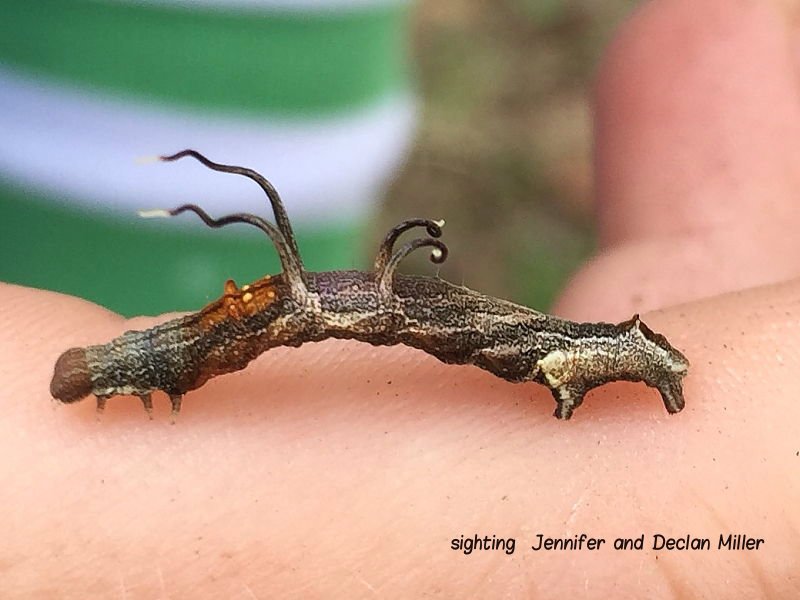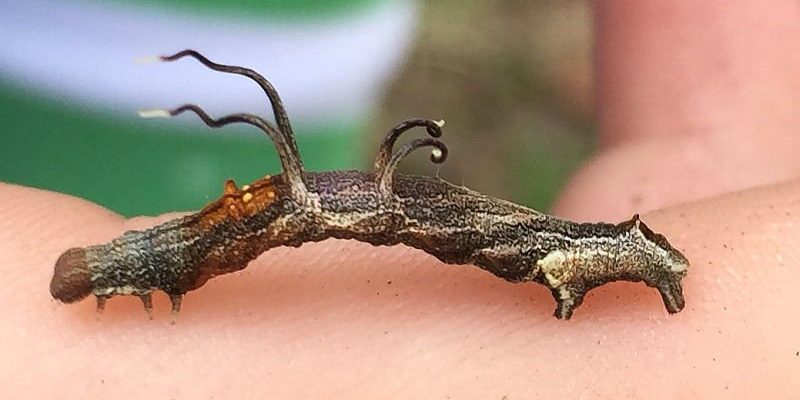
Here’s the thing: the answer isn’t as straightforward as you might think. The duration can vary based on a few factors, including the species of inchworm, environmental conditions, and food availability. Think of it like waiting for a cake to rise in the oven; you can’t rush it, and external factors can change how long it takes. In this article, we’ll explore the developmental timeline of inchworms, what influences their growth, and why this stage is so critical to their life cycle.
Understanding the Life Cycle of Inchworms
Inchworms undergo a fascinating transformation during their lives. They start as eggs, hatch into larval inchworms, and eventually pupate before emerging as adult moths. The larval stage is a crucial period for growth and development. Typically, inchworms spend about **3 to 6 weeks** in this stage, but it can vary by species and environmental conditions.
During the larval phase, inchworms focus on feeding and growing. They munch on leaves, which helps them gather energy for their next stage. This is where you might notice them appearing in gardens, not just inching along but also causing some plant damage. The duration of the larval stage can depend heavily on how much they eat and the temperature of their environment. Warmer weather might encourage them to grow faster, while cooler conditions can slow down their development.
The Role of Temperature and Environment
Temperature plays a significant role in the growth of inchworms. These little critters are **ectothermic**, meaning their body temperature is influenced by their surroundings. If it’s warm and sunny, inchworms may grow quickly, pushing their larval stage to the shorter end of the 3 to 6-week spectrum. However, if temperatures dip or if they face unfavorable weather, their growth may slow down.
Besides temperature, the **availability of food** is another crucial factor. If there’s plenty of tender foliage for them to snack on, they’ll likely thrive. But if food is scarce, inchworms may take longer to reach the pupation stage. This means that when you notice them in your garden, it’s a great reminder to keep an eye on the health of your plants, too!
Factors Influencing Larval Duration
The length of time inchworms stay in the larval stage isn’t just about temperature and food. Several other factors can also come into play. For instance, some species may have evolved to stay in the larval stage longer as a survival mechanism. This can help them avoid predators or harsh environmental conditions.
Here are some key influences on larval duration:
- Species Specificity: Different inchworm species have varying growth rates and larval durations.
- Predation Risks: If they sense more predators around, inchworms might stay hidden and grow slowly.
- Health and Nutrition: A well-fed inchworm generally grows faster than one struggling to find food.
Consider this: if a certain inchworm feels threatened, it might decide to take its time until it feels safe enough to pupate. Nature has a way of ensuring that these little guys have the best chance of survival.
The Transformative Stage: From Larva to Pupa
After several weeks of munching and growing, inchworms eventually reach the point where they’re ready to transition to the next stage: pupation. This is when they’ll find a secluded spot, often on a tree or shrub, to make themselves cozy as they transform.
During this pupal stage, they undergo significant changes. Their bodies reorganize into the beautiful moths we often see flitting around in our gardens. This transformation can take anywhere from a couple of weeks to several months, depending on the species and environmental conditions.
It’s important to note that not all inchworms will pupate immediately after the larval stage. Some might stay in the larval stage longer if conditions aren’t quite right.
Why the Larval Stage Matters
The larval stage is essential for inchworms—it’s when they build the strength and resources they need for their next transformation. Think of it like gathering supplies for a big move. The more prepared they are, the better chance they have of thriving as adults.
This stage also sets the tone for their future survival. If they have had access to enough food and good conditions, they’ll not only grow into healthy moths but also be more capable of reproducing and continuing their life cycle.
Inchworms, like many insects, play a valuable role in the ecosystem. They help with pollination and serve as food for various predators. Understanding their life cycle and larval stage can help us appreciate their importance in the food chain and the environment.
Fun Facts About Inchworms
Inchworms are pretty fascinating little beings! Here are a few fun facts that might make you appreciate them even more:
- Unique Movement: Inchworms move by contracting and stretching their bodies, making them resemble tiny caterpillars playing hide-and-seek.
- Color Variety: Depending on the species, inchworms can be a range of colors, from green to brown, helping them camouflage among leaves.
- Many Moths, Many Species: There are over **20,000 species** of moths in the Geometridae family, so there’s a lot to discover!
These quirky facts about inchworms highlight the diversity and adaptability of nature. So next time you spot one inching along a branch, take a moment to appreciate its place in the wider world.
Final Thoughts on Inchworms
Overall, understanding how long inchworms stay in the larval stage gives us insight into their development and survival. Generally, this phase lasts anywhere from **3 to 6 weeks**, depending on various factors like temperature and food availability.
As you find inchworms in your garden, remember that they’re not just munching away; they’re preparing for a significant transformation into beautiful moths. By appreciating these little creatures and their life cycles, we can foster a healthier ecosystem around us.
So the next time you see an inchworm inching along, think about its journey and the hard work it’s putting in during its larval stage. Who knows? You might just end up inspired by its transformation!

